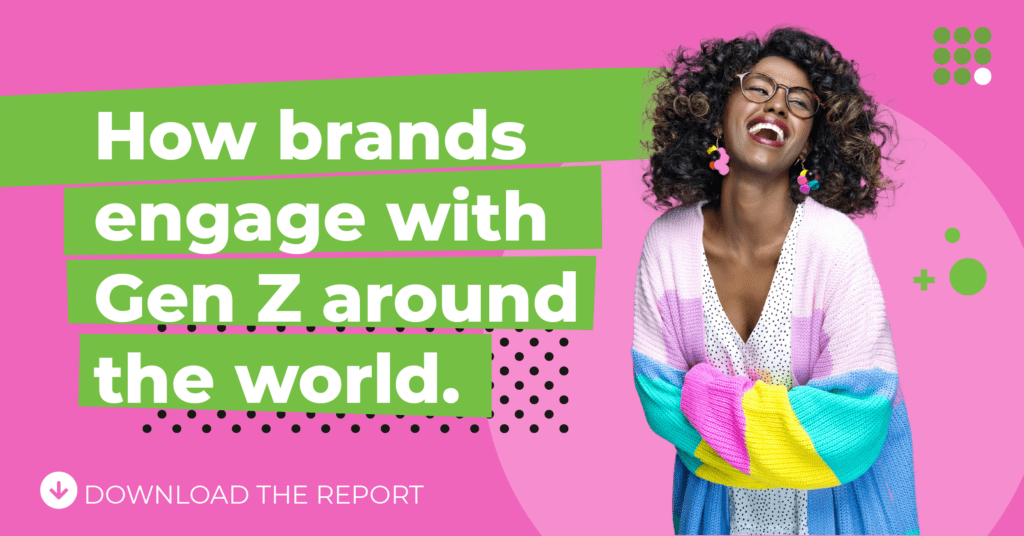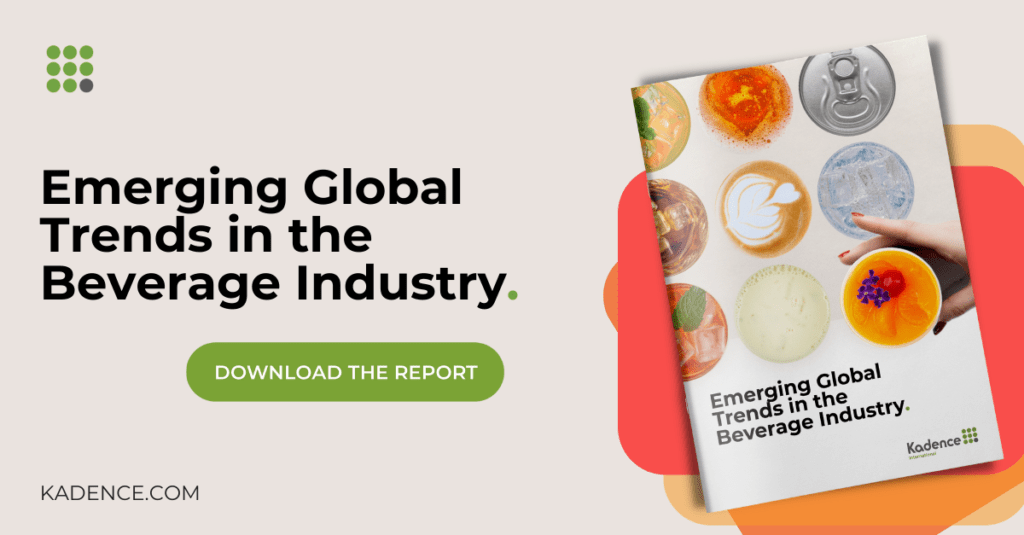In today’s ever-evolving marketplace, building strong and lasting connections with customers is paramount to the success of any company. Marketing leaders must understand their customers at a deeper level.
One tool that can help achieve this is data. Data-driven insights provide invaluable opportunities to enhance customer experiences, drive engagement, and foster stronger connections. In this blog post, we will explore how to effectively use data to strengthen customer connections, providing you with practical strategies to elevate your marketing efforts.
- Embrace a Data-Driven Mindset.
Marketing leaders must cultivate a data-driven mindset to leverage data effectively. They should encourage teams to embrace a culture of curiosity and experimentation and foster an environment where data is viewed as an asset and a powerful tool for decision-making. Instilling this mindset creates a foundation for utilising data to strengthen customer connections.
- Define and Understand Your Customer Personas.
Developing a deep understanding of your customers is crucial. Start by creating well-defined customer personas that capture your target audience segments’ key characteristics, needs, and behaviors. By segmenting your customer base and crafting personas, you can tailor your messaging and experiences to resonate with each group on a more personal level.
- Leverage Customer Data for Personalisation.
Personalisation is a crucial driver of customer connections. Utilise the data at your disposal to deliver personalised experiences across various touchpoints. Analyse customer behavior, preferences, and purchase history to provide targeted recommendations, customised content, and personalised offers. This level of personalisation demonstrates your commitment to understanding and meeting the unique needs of your customers.
- Harness the Power of Predictive Analytics.
Predictive analytics lets you anticipate customer behavior and preferences, enabling proactive engagement. Leverage historical data and machine learning algorithms to forecast future customer actions and optimise your marketing strategies. When you understand what your customers are likely to do, you can deliver timely and relevant messages, offers, and experiences, further strengthening the bond between your brand and your customers.
- Implement Real-Time Data Monitoring.
Customer needs and preferences are constantly evolving. To stay ahead, implement real-time data monitoring systems that provide up-to-the-minute insights into customer interactions and behavior. By tracking real-time data, you can identify trends, respond quickly to emerging opportunities, and make informed decisions that align with your customers’ evolving expectations.
- Use Data to Drive Customer Journey Mapping.
Customer journey mapping is a fundamental step in strengthening customer connections. Combining qualitative and quantitative data helps brands create comprehensive customer journey maps that highlight touchpoints, pain points, and opportunities for engagement. These maps enable them to identify key moments where they can deliver exceptional experiences, turning potential challenges into opportunities to deepen customer relationships.
“In the modern world of business, it is useless to be a creative, original thinker unless you can also sell what you create.” – David Ogilvy, Advertising Executive.
- Leverage Social Listening and Sentiment Analysis.
Social media has become integral to customers’ lives, providing a treasure trove of data and insights. Implement social listening and sentiment analysis tools to monitor conversations about your brand and industry. By understanding the sentiment and feedback expressed by customers on social platforms, you can respond promptly, address concerns, and even turn detractors into brand advocates.
- Invest in Data Security and Privacy.
As custodians of customer data, it is crucial to prioritise data security and privacy. Implement robust security measures to safeguard customer information and adhere to applicable data protection regulations. Transparently communicate your commitment to data privacy to build trust with your customers, assuring them that their information is safe in your hands.
- Continuously Measure and Optimise.
Data-driven marketing is an iterative process. Continuously measure the effectiveness of your strategies and campaigns using key performance indicators (KPIs) aligned with your objectives—leverage data analytics to uncover insights from campaign performance, customer engagement, and conversions. Use A/B testing to experiment with different approaches and identify what resonates most with your audience. Brands can continually strengthen customer connections and drive meaningful results by consistently measuring and optimising their efforts based on data-driven insights.
- Foster a Culture of Customer-Centricity.
Data alone cannot strengthen customer connections. It requires a customer-centric culture that puts the customer at the center of decision-making. Encourage cross-functional collaboration, where teams across marketing, sales, customer service, and product development work together to understand and meet customer needs. Embed a customer-centric mindset into every aspect of your organisation, ensuring that every decision and action aligns to enhance customer connections.
How to use technology to deepen customer connections.
Technology is crucial in helping marketing leaders, and CMOs strengthen customer connections through data-driven strategies in the digital age. Let’s explore some key technologies that can enhance your efforts:
- Customer Relationship Management (CRM) Systems: CRM systems are invaluable for managing and organizing customer data. These platforms centralise customer information, including interactions, purchase history, preferences, and demographics. CRM systems provide a holistic view of each customer, enabling personalised communications and targeted marketing campaigns.
- Marketing Automation: Marketing automation platforms streamline repetitive tasks and enable personalised customer interactions at scale. Through automation, you can segment your audience, trigger personalised email campaigns based on customer behavior, nurture leads, and deliver timely, targeted messages. Automation ensures consistent engagement and helps nurture customer relationships.
- Customer Data Platforms (CDPs): CDPs integrate customer data from multiple sources, such as CRM systems, website interactions, social media, and more. These platforms create unified customer profiles, enabling a comprehensive view of individual customers. CDPs provide actionable insights for personalised marketing, campaign optimisation, and improving customer experiences across channels.
- Artificial Intelligence (AI) and Machine Learning (ML): AI and ML technologies have revolutionised customer insights and engagement. They enable advanced data analysis, predictive modeling, and real-time decision-making. AI-powered chatbots and virtual assistants enhance customer support and engagement. ML algorithms uncover patterns in customer data, enabling personalised recommendations, content personalisation, and optimised targeting.
- Social Listening and Sentiment Analysis Tools: Social media monitoring tools allow you to track and analyse customer conversations, sentiments, and brand mentions on social platforms. These tools help you understand customer perceptions, identify emerging trends, and respond promptly to customer feedback. Social listening and sentiment analysis help you engage with customers proactively and enhance your brand reputation.
- Data Analytics and Visualisation: Data analytics platforms provide powerful tools for analysing and visualising customer data. These platforms help marketing leaders derive insights, identify trends, and make data-driven decisions. With interactive dashboards and visual data representations, you can quickly understand complex information and communicate findings to stakeholders effectively.
- Personalisation Engines: Personalisation engines leverage customer data to deliver highly tailored experiences. These engines use algorithms to analyse customer behavior, preferences, and historical data, allowing you to dynamically personalise website content, product recommendations, and email marketing. Personalisation engines enhance customer connections by delivering relevant, contextually-appropriate experiences.
- Customer Feedback and Survey Tools: Customer feedback and survey tools enable you to collect valuable insights directly from customers. These tools help you gather feedback on satisfaction, preferences, and expectations, allowing you to understand customer needs and tastes better. Leveraging this data strengthens customer connections by demonstrating that you value their opinions and are committed to meeting their expectations.
It’s important to note that technology is a means to an end. Successful technology implementation relies on clearly understanding your goals, effective data management, and aligning technology with your overall customer-centric strategy. Choose technologies that integrate well with existing systems, support your objectives, and provide actionable insights for enhancing customer connections.
By leveraging these technologies effectively, marketing leaders and CMOs can unlock the full potential of their customer data, gain deeper insights, and cultivate more robust connections with their target audience.
Embrace technology as a catalyst for data-driven marketing strategies, and let it empower you to build meaningful relationships with your customers in the digital era.
Let’s explore how data-driven strategies and technology can benefit specific industries.
Retail
Personalised Recommendations: By leveraging customer data and AI-powered recommendation engines, retailers can provide personalized product recommendations based on individual preferences and purchase history. This enhances the customer’s shopping experience, increases engagement, and drives sales.
A report by Salesforce reveals that 52% of customers expect offers to always be personalised.
Targeted Marketing Campaigns: Data analytics and segmentation allow retailers to create targeted marketing campaigns. By understanding customer demographics, preferences, and behaviors, retailers can tailor their messaging and offer to specific customer segments, improving campaign effectiveness and ROI.
Omnichannel Experience: Technology enables retailers to provide a seamless omnichannel experience. Customers can browse and purchase products through various channels (e-commerce, mobile apps, brick-and-mortar stores), with their preferences and buying history seamlessly synced across platforms.
Banking
Personalised Financial Advice: With data analytics, banks can gain insights into their customers’ financial habits, needs, and goals. This enables them to provide personalised financial advice and recommend suitable products and services tailored to each customer’s unique circumstances.
A study by McKinsey & Company suggests that around 60 percent of customers trust that their primary bank will help navigate the next financial downturn. And this number jumps to more than 80 percent for customers who report high satisfaction with the experience their bank delivers.
Fraud Detection: Advanced data analytics and machine learning algorithms help banks detect and prevent fraudulent activities in real time. Banks can identify and mitigate potential risks by analysing patterns, anomalies, and customer behavior, enhancing security and trust.
Chatbots and Virtual Assistants: AI-powered chatbots and virtual assistants provide personalised customer support, answer queries, offer account information, and assist with transactions. These technologies improve customer engagement, reduce wait times, and enable banks to offer 24/7 service.
FMCGs (Fast-Moving Consumer Goods)
Demand Forecasting: FMCG companies can leverage historical sales data and predictive analytics to forecast demand accurately. This allows for optimised production planning, minimising inventory costs, and ensuring products are available when and where customers need them.
Targeted Marketing and Promotions: FMCG companies can segment their audience and deliver targeted marketing campaigns and promotions by analysing customer data and purchase patterns. This improves marketing efficiency and helps build brand loyalty.
The Harvard Business Review found companies that leverage personalised marketing strategies see an average increase in sales of 10% or more.
Real-Time Inventory Management: IoT and data analytics enable real-time inventory tracking. This ensures timely replenishment, reduces out-of-stock situations, and optimises supply chain management, improving customer satisfaction.
Travel
Personalised Travel Experiences: By analysing customer preferences, travel companies can personalise recommendations for destinations, accommodations, and activities. This enhances the travel experience, increases customer satisfaction, and encourages repeat bookings.
Dynamic Pricing: Data-driven pricing strategies allow travel companies to adjust prices based on demand, seasonality, and customer behavior. This optimisation of pricing ensures competitive offers while maximising revenue.
The International Air Transport Association (IATA) reports that airlines can increase revenue by up to 20% by adopting data-driven pricing strategies based on customer segmentation and demand patterns.
Customer Feedback Analysis: Travel companies can analyse customer feedback and reviews to identify areas for improvement and enhance the overall travel experience. Companies can build trust and loyalty by promptly addressing customer concerns and suggestions.
Medical:
Patient Data Analysis: Data analytics and electronic health records (EHRs) enable healthcare providers to analyse patient data, identify trends, and improve diagnoses and treatment plans. This enhances patient outcomes and supports evidence-based medical practices.
A study published in the Journal of Medical Internet Research (JMIR) showed that remote patient monitoring reduced hospital admissions by 25% and emergency room visits by 19%.
Remote Patient Monitoring: Technology facilitates remote monitoring of patients, allowing healthcare providers to collect and analyse real-time data on vital signs, symptoms, and treatment adherence. This enables early intervention and personalised care for patients, improving health outcomes.
Precision Medicine: Through data analysis, genetic profiling, and AI algorithms, healthcare professionals can personalise treatment plans based on individual patient characteristics. This targeted approach improves treatment efficacy and patient satisfaction.
In these sectors, data-driven strategies and technologies empower businesses to understand their customers better, deliver personalised experiences, optimise operations, and build stronger connections. By harnessing the power of data, organisations can stay ahead of the curve and meet the evolving needs of their customers.
In today’s data-driven world, marketing leaders and CMOs have a unique opportunity to harness the power of data to strengthen customer connections.
You can build deep and lasting customer relationships by adopting a data-driven mindset, leveraging customer insights, and personalising experiences. Embrace the transformative potential of data analytics, predictive modeling, and real-time monitoring to stay agile and responsive to evolving customer needs.
Data is not just a collection of numbers but a strategic asset that empowers brands to deliver exceptional customer experiences and drive business growth. By infusing data-driven practices into your marketing strategies, you can future-proof your organisation and forge stronger connections with your customers, setting your brand apart in a competitive landscape.
Get regular insights
Keep up to date with the latest insights from our research as well as all our company news in our free monthly newsletter.





 Senior Marketing Executive
Senior Marketing Executive Sales & Marketing
Sales & Marketing General Manager PR -Internal Communications & Government Affairs
General Manager PR -Internal Communications & Government Affairs Vital Strategies
Vital Strategies
 Customer Intelligence Director
Customer Intelligence Director